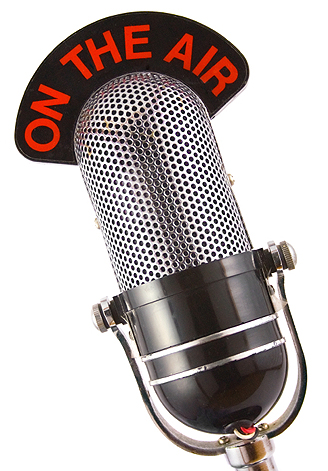 My parents were children of the Great Depression. They grew
up listening to radio for their entertainment. I remember my father buying my
brother and me a series of old radio recordings from the 1930s, complete with
the product advertisements. Those commercially sponsored shows were cutting
edge marketing for the era, and very effective in making lifelong consumers of
products from Proctor and Gamble, General Foods, Sunoco and many others who
found the golden era of radio golden to their bottom lines as well. (In fact,
the term "Soap Opera” is founded in P&G’s soap commercials for products
such as Ivory soap and Oxydol detergent on many early radio dramatic serials.)
However interesting it was to my father, my brother and I were unwilling to sit
and just listen to old radio shows. We had been raised watching television in
living color and just could not sit still long enough without a visual to hold
our attention. We were living in the seam of one generation’s preferred method
of communication to the next.
My parents were children of the Great Depression. They grew
up listening to radio for their entertainment. I remember my father buying my
brother and me a series of old radio recordings from the 1930s, complete with
the product advertisements. Those commercially sponsored shows were cutting
edge marketing for the era, and very effective in making lifelong consumers of
products from Proctor and Gamble, General Foods, Sunoco and many others who
found the golden era of radio golden to their bottom lines as well. (In fact,
the term "Soap Opera” is founded in P&G’s soap commercials for products
such as Ivory soap and Oxydol detergent on many early radio dramatic serials.)
However interesting it was to my father, my brother and I were unwilling to sit
and just listen to old radio shows. We had been raised watching television in
living color and just could not sit still long enough without a visual to hold
our attention. We were living in the seam of one generation’s preferred method
of communication to the next.
We find ourselves in the middle of another communication
seam now as well. The divide is bigger than going from a TV screen to a mobile
phone monitor. It is about having a multitude of choices that were never
available with the older media. It is about creating your own experience and
your own reality.
My father always told us that TV was the death of
imagination. He would say that when you listened to a radio show, you created
the sets in your mind. What the characters looked like, what they were wearing,
how they moved and interacted with other characters were all a part of what you
wanted it to be as you listened. It was interactive. TV did all of that for you
and left nothing to the imagination. I suppose he was spot on with his
analysis, but it did not stop TV from overtaking radio for prime time
programming. And it forever changed the format of radio. Back in the golden age
of radio, sponsors of the programs typically wove advertising into the script.
For instance, the Jack Benny Show would have Jack taking a phone call while the
announcer read the advertising copy. It was an early form of product placement
advertising. When radio switched to an all-music format, there became a split
in the slick marriage of brand and programming.
Now we are seeing the advent of something much like that old
radio sponsorship product placement going on with the new media. For one thing,
social media has leaned us away from the hard pitch in advertising towards
content marketing – giving advice or perspective from an area of expertise and
interweaving the product or service you are selling into the story. That is
what early radio advertising did. There are still a few talk radio hosts (Rush
Limbaugh comes to mind) who weave the promotion of product into the content of the
programming. When they are done well, blogs are using this content/product
marketing technique. So are posts on company social networking sites. This goes
beyond what TV called product placement, by having a brand show up in a sitcom.
This takes a bit more skill than just sitting a bottle on a table and assuming
everyone will want to buy it by watching a show. This is using the content
around the promotion of the product so it just seems like it is part of regular
conversation.
Including this kind of content/product marketing is not
something you can relegate to your least experienced employee. Neither is it
something you can just toss to your sales team and tell them to make something
happen. Your sales staff may have a phenomenal knowledge of your product, but
the skill it takes to incorporate product marketing into your content without
it seeming like you are selling something typically goes beyond sales staff.
Make sure you are investing your marketing dollars in someone who can make that
connection without turning every piece into a sales offer sheet. Here are some
examples of content marketing from a couple of our clients that have had great
success.
Specialized concrete paving
Automated feeder system
As we live out a new marketing era, take some cues from old
radio marketing. Engaging the customer without the customer knowing you are
selling anything to them is the new media’s calling card.
______________________
Photo by Bluewren